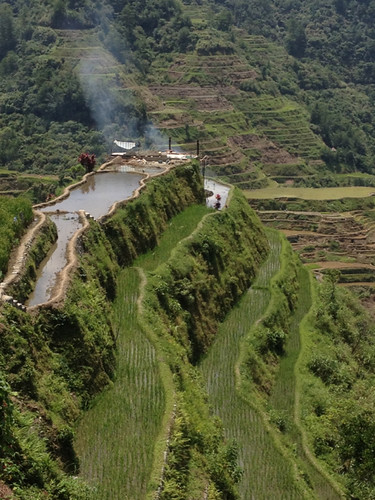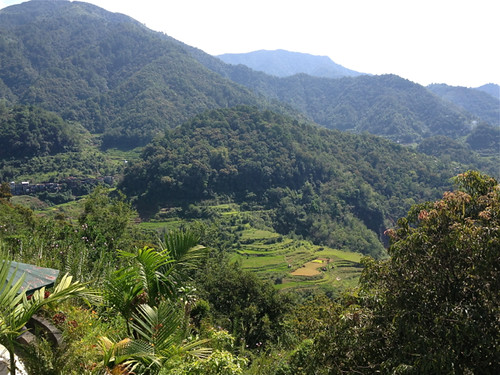
My Philippine family didn't need too much persuasion to make the journey, even though it involved long car trips over often precipitous roads ominously littered with rocks from previous land-slips. The compensation was that every turn of the road revealed an even more beautiful landscape of clouds, mountains, valleys, ravines, and the rice terraces.

People dispute the age of the terraces, but general agreement is that they are around 2000 years old. The walls are constructed of intricately arranged stones, sometimes with mud used for mortar, and they echo the contours of the slopes to maximise the area of each rice-growing segment. Water drains from the top to the bottom of the terraces in an ingenious feat of hydraulic engineering. A number of the areas of terraces have received UNESCO World Heritage listing, but to see those you really need to have a four-wheel drive vehicle, or consign yourself to the local overloaded jeepneys, and be willing to trek considerable distances across the mountains. This was beyond our capabilities and we contented ourselves with visiting the towns of Banaue and Sagada and driving and walking to the more accessible viewing points.

When this is the view from your hotel room in Banaue...

it's very tempting just to sit and knit and watch the mists and shadows and showers pass across the landscape.
Maintaining and farming the terraces is hard work and requires a strong sense of community to ensure that each unit-holder does nothing to unsettle the balance of the ecosystem of the terraces. The inaccessibility of the Cordillera region protected its peoples from Spanish colonisation and minimised the impact of US rule in the first part of the twentieth century. But modern communication technologies and better road access provide wider temptations and opportunities beyond the local for young people. There is some government support for maintenance of the terraces, but I can't help but wonder how they can be sustained into the future.
3 comments:
Wider temptations and opportunites - the two-sided sword of modern living isn't it? Beautiful pictures. thanks.
2000 years old! That is amazing. As are your photos. I'm very glad you were able to go back, and then share these pictures with us.
What superb rice terraces! Thank you for sharing and lovely to know that you are back in Oz. Barb
Post a Comment